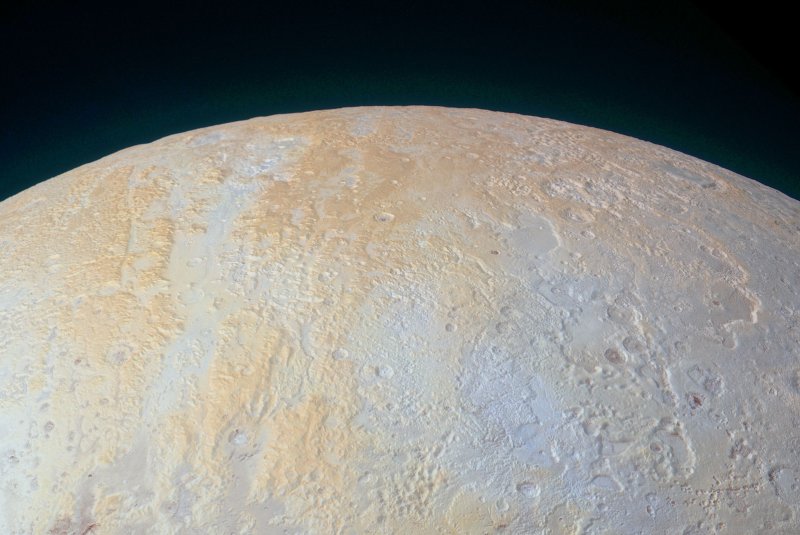WASHINGTON, Feb. 26 (UPI) -- New images of Pluto's north pole showcase the dwarf planet's unusual canyons. The images were captured by the Multispectral Visible Imaging Camera, or MVIC, on the New Horizons probe.
The series of pits and plateaus weaves across a polar region known as Lowell Regio. Most of the canyons are roughly six miles wide. The widest canyon stretches ten miles across.















